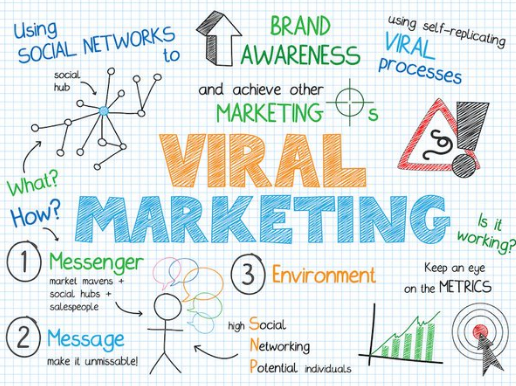Introduction
In the digital era, viral marketing has become the holy grail for brands seeking rapid and expansive exposure. A single viral campaign can catapult a brand into the spotlight, driving massive engagement and significantly boosting brand awareness. However, achieving virality is no simple feat; it requires a blend of creativity, strategy, and timing. This article will explore the essential components of a successful viral marketing campaign, from understanding viral content to leveraging social media platforms and optimizing performance.
Creating a viral marketing campaign requires strategic planning and a keen understanding of current trends. Leveraging social media platforms is crucial, especially when aiming to get your content trending on Twitter/X. By engaging with trending topics and using popular hashtags, you can significantly increase your campaign’s visibility and reach.
Understanding Viral Content
What Makes Content Go Viral?
Creating content that goes viral involves crafting messages that resonate deeply with your audience and compel them to share with their networks. Viral content typically has the following characteristics:
- Emotional Appeal: Content that elicits strong emotions, whether it’s joy, surprise, anger, or curiosity, is more likely to be shared.
- Relatability: Content that audiences can personally relate to or find relevant to their experiences.
- Shareability: Easy-to-share formats, such as videos, memes, and infographics, increase the likelihood of content spreading.
- Simplicity: Clear and concise messaging ensures that the content is easily understood and quickly shared.
Steps to Create a Viral Marketing Campaign
1. Conduct In-Depth Research and Audience Analysis
Understanding your target audience is the cornerstone of any successful marketing campaign. To create content that resonates, you need to know who your audience is, what they care about, and how they behave online.
Research Techniques:
- Demographics: Gather information on your audience’s age, gender, location, and income level.
- Psychographics: Understand their values, interests, attitudes, and lifestyles.
- Behavioral Data: Analyze their online behaviors, such as social media usage, content preferences, and engagement patterns.
2. Develop a Unique and Compelling Idea
A viral campaign starts with a unique and compelling idea that captures attention. Your idea should align with your brand values and be designed to engage your target audience.
Idea Generation Tips:
- Brainstorming Sessions: Conduct brainstorming sessions with your team to generate creative ideas.
- Trend Analysis: Look at current trends and see how you can incorporate them into your campaign.
- Audience Insights: Use insights from your audience research to develop ideas that resonate with them.
3. Create High-Quality Content
The quality of your content can make or break your campaign. High-quality content is more likely to capture attention and be shared by your audience.
Content Creation Strategies:
- Professional Production: Invest in professional production for videos, images, and graphics.
- Storytelling: Use storytelling techniques to create an emotional connection with your audience.
- Interactive Elements: Incorporate interactive elements, such as polls, quizzes, and challenges, to engage your audience.
4. Leverage Social Media Platforms
Social media platforms are the primary channels for distributing viral content. Each platform has its unique features and audience, so it’s essential to tailor your approach accordingly.
Platform-Specific Strategies:
- Twitter/X: Utilize trending hashtags, engage in real-time conversations, and create short, impactful tweets.
- Facebook: Share engaging videos, images, and stories to reach a broad audience.
- Instagram: Use visually appealing photos, videos, and Stories/Reels to capture attention.
- TikTok: Create short, creative videos aligned with trending challenges and hashtags.
5. Collaborate with Influencers
Influencers can amplify your campaign’s reach and credibility. Collaborating with influencers who align with your brand values and have an engaged following can significantly enhance your campaign’s impact.
Influencer Collaboration Tips:
- Identify Relevant Influencers: Use tools and research to find influencers whose audience matches your target demographic.
- Engage Authentically: Build genuine relationships with influencers to ensure authentic endorsements.
- Co-Create Content: Work with influencers to co-create content that aligns with your campaign goals and resonates with their followers.
6. Optimize Timing and Frequency
The timing and frequency of your posts can greatly influence your campaign’s success. Posting at optimal times ensures maximum visibility and engagement.
Timing and Frequency Tips:
- Analyze Data: Use analytics tools to determine when your audience is most active.
- Industry Benchmarks: Research best practices for posting times within your industry.
- Consistent Posting: Maintain a consistent posting schedule to keep your audience engaged.
7. Encourage User-Generated Content
User-generated content (UGC) can significantly boost your campaign’s reach and authenticity. Encourage your audience to create and share their own content related to your campaign.
UGC Strategies:
- Contests and Challenges: Host contests or challenges that incentivize users to create and share content.
- Branded Hashtags: Create a unique hashtag for your campaign and encourage users to adopt it in their posts.
- Feature User Content: Share the best user-generated content on your brand’s social media channels to recognize and reward your audience’s contributions.
Leveraging Social Media for Virality
Best Practices for Twitter/X
Twitter/X is a powerful platform for viral marketing due to its real-time nature and the use of hashtags. Here’s how to make the most of it:
Engaging with Trending Topics
- Monitor Trends: Keep an eye on trending topics and hashtags relevant to your industry.
- Participate Actively: Engage with these trends by posting relevant content and using trending hashtags.
Crafting Compelling Tweets
- Concise Messaging: Keep your tweets short, impactful, and easy to understand.
- Multimedia Integration: Use images, videos, and GIFs to make your tweets more engaging.
- Interactive Elements: Use polls, questions, and call-to-actions to encourage interaction.
Best Practices for Facebook
Facebook’s diverse user base and wide range of content formats make it an ideal platform for viral marketing.
Utilizing Video Content
- Short and Engaging: Create short videos that capture attention within the first few seconds.
- Live Videos: Use Facebook Live to interact with your audience in real-time and create a sense of immediacy.
- Storytelling: Tell a compelling story that resonates with your audience’s emotions and values.
Building Community
- Facebook Groups: Create or join groups related to your industry and actively participate in discussions.
- Engage with Followers: Respond to comments, share user-generated content, and foster a sense of community around your brand.
Best Practices for Instagram
Instagram’s visual focus and high engagement rates make it an excellent platform for viral content.
Creating Visual Appeal
- High-Quality Images: Post high-resolution images that are visually appealing and aligned with your brand aesthetic.
- Instagram Stories and Reels: Use Stories and Reels to share behind-the-scenes content, tutorials, and quick updates.
Utilizing Hashtags
- Relevant Hashtags: Use a mix of popular and niche hashtags to increase the reach of your posts.
- Branded Hashtags: Create a unique hashtag for your campaign and encourage users to use it in their posts.
Best Practices for TikTok
TikTok’s short-form video content and algorithm-driven feed offer significant viral potential.
Participating in Challenges
- Trending Challenges: Participate in trending challenges and create your own branded challenges to engage users.
- Creative Content: Focus on creating entertaining, informative, or inspiring content that aligns with TikTok’s community.
Collaborating with Creators
- Influencer Partnerships: Collaborate with popular TikTok creators who resonate with your brand.
- User Engagement: Encourage users to create content using your branded hashtags and challenges.
Monitoring and Optimizing Viral Campaigns
Key Metrics to Track
Tracking the right metrics is essential to evaluate the effectiveness of your viral marketing campaign. Here are some important metrics to consider:
- Reach: The total number of people who see the content.
- Engagement: The number of likes, comments, shares, and other interactions.
- Impressions: The number of times the content is displayed.
- Click-Through Rate (CTR): The percentage of viewers who click on a link or CTA.
- Conversion Rate: The percentage of viewers who take a desired action, such as making a purchase.
Tools for Monitoring and Analytics
Several tools and platforms can help you track and analyze your viral marketing campaigns. Some popular options include:
- Google Analytics: Track website traffic and conversions driven by viral campaigns.
- Social Media Analytics: Use built-in analytics tools on platforms like Instagram, YouTube, and Twitter to monitor engagement and reach.
- Influencer Marketing Platforms: Platforms like AspireIQ, Upfluence, and Traackr provide comprehensive analytics and reporting features for influencer campaigns.
Case Studies of Successful Viral Campaigns
Old Spice: “The Man Your Man Could Smell Like”
Old Spice’s viral campaign featured humorous and quirky videos that quickly gained traction on social media. The campaign’s success can be attributed to its memorable content, clever use of humor, and strategic social media engagement.
Key Takeaways
- Humor and Entertainment: Humorous content is highly shareable and can quickly capture attention.
- Engaging with Audience: Old Spice actively engaged with its audience by responding to comments and creating personalized videos.
ALS Ice Bucket Challenge
The ALS Ice Bucket Challenge became a global phenomenon, raising awareness and funds for ALS research. The campaign’s success was driven by its interactive and participatory nature, encouraging users to challenge their friends and share their videos.
Key Takeaways
- Interactive Campaigns: Encouraging user participation can significantly boost engagement and reach.
- Viral Mechanics: Creating a challenge that incentivizes sharing can amplify the campaign’s virality.
Dove: “Real Beauty Sketches”
Dove’s “Real Beauty Sketches” campaign focused on promoting self-esteem and body positivity. The emotionally impactful videos resonated with a wide audience, leading to millions of shares and extensive media coverage.
Key Takeaways
- Emotional Appeal: Content that evokes strong emotions can drive high levels of engagement and sharing.
- Social Impact: Campaigns that address social issues or promote positive messages can generate significant attention and support.
Conclusion
Creating a viral marketing campaign requires a strategic blend of creativity, audience understanding, and effective use of social media platforms. By crafting engaging content, leveraging influencers, optimizing timing, and encouraging user-generated content, you can significantly increase the chances of your campaign going viral.
Analyzing successful campaigns and avoiding common pitfalls can provide valuable insights and enhance your approach. Embrace the power of viral marketing to boost your brand’s visibility, engage with your audience, and achieve remarkable results. With the right strategy and execution, your brand can create memorable and impactful campaigns that resonate with audiences and achieve lasting success.


